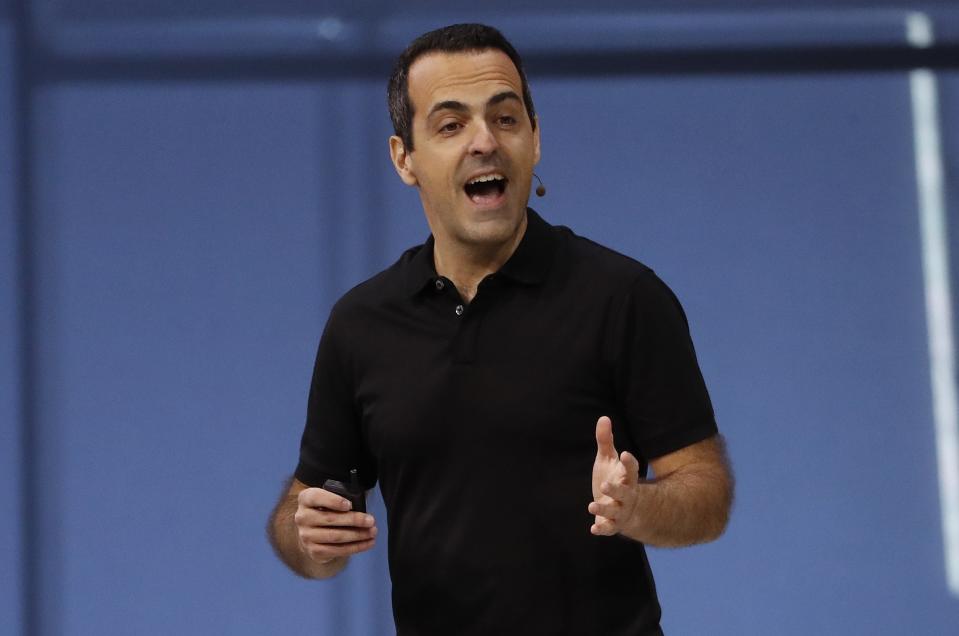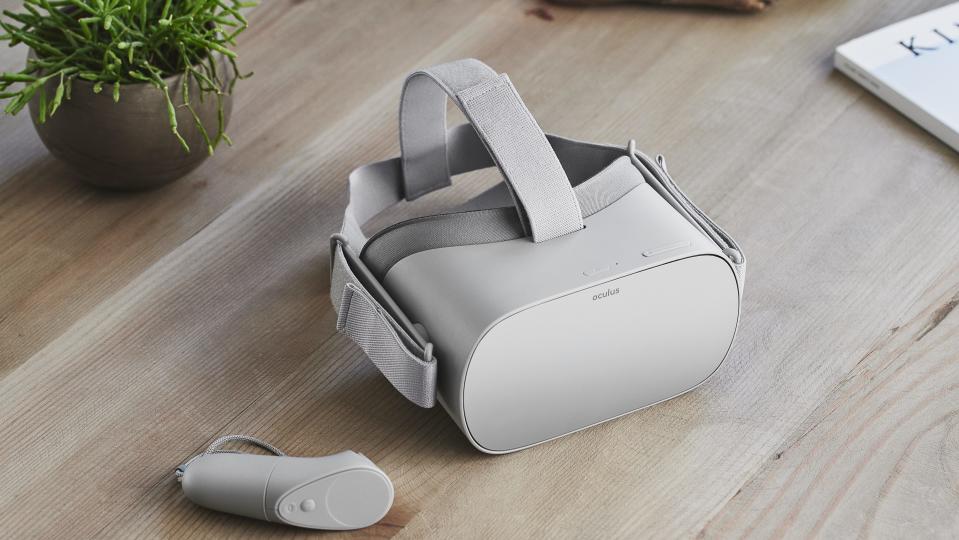Facebook VR chief: 'We’re not here to make money'
Let’s get this out of the way: Oculus Go, a new $199 headset, isn’t a moneymaker for Oculus, the virtual reality company Facebook (FB) scooped up in 2014.
“We’re not really here to make money,” Oculus chief and VP of VR Hugo Barra told Yahoo Finance. “We’re not a classic hardware company. Of course, Facebook is always investing in consumer hardware, but we’re not here to make money.”
Instead, think of Go, a headset that doesn’t need to be tethered to a PC or smartphone, as one entry-level point for people to wade into VR for the first time. It’s a smartly executed move for Oculus as it strives to overcome the lingering stigmas surrounding VR — namely, that VR is geeky tech, with oversized, “Tron”-like bulky headsets, high pricing and awkward cords.

Overcoming that VR stigma
To be fair, some of that stigma is justified. Historically speaking, VR has been somewhat slow to innovate in a way the mainstream public can understand and embrace. But since Facebook acquired Oculus four years ago, the VR company has been on a steady march to change that, by partnering up with Samsung to offer Gear VR, a sub-$100 headset that pairs with Samsung smartphones, and by slashing the price on its high-end Rift headset last year by $100 to $399.
By releasing a cord-free, standalone device such as Go, Oculus is well-positioned to court new users and further build up its user base, which is good, given Facebook CEO Mark Zuckerberg’s goal of eventually getting 1 billion people into VR.
Achieving that goal — if companies like Oculus indeed accomplish that — involves releasing more devices like Go that are easy to grok, not just for seasoned VR aficionados but for the mainstream public. And most of those people care more about compelling experiences than they do about hardware specifications.
Defying distances

To that end, Go launched with more than 1,000 apps and games, from Netflix (NFLX) and Hulu to games such as the space shooter “Ashar Online” and “Catan VR,” a virtual board game. Oculus is also launching a TV app for those who want to watch television in VR, with content from CBS All Access and Crunchy Roll, a go-to destination for Japanese anime. Meanwhile, another new Oculus app called Venues will make it possible to stream live concerts and sports through the headset.
One of the more compelling use cases for a device like Go is something called Oculus Rooms, which lets up to four people get together in a virtual living room to do things like view photos, stream a movie together or play virtual board games. Simple as that sounds, Oculus Rooms is a nice add-on for some far-flung users, allowing, say, best friends on different coasts to simul-watch the latest episode of “The Handmaid’s Tale” on Hulu or family members to play a board game together.
According to Barra, offering up moments in the virtual ether that “defy distance” is key to building on Oculus’s success.
Added Barra: “We really need to be able to connect people regardless of physical distance, [to] be able to create this human connection even when you’re not physically present in the same place.”
In that regard, Oculus’s and Facebook’s missions aren’t all that different.
—
JP Mangalindan is the Chief Tech Correspondent for Yahoo Finance covering the intersection of tech and business. Email story tips and musings to jpm@oath.com. Follow him on Twitter or Facebook.
More from JP


